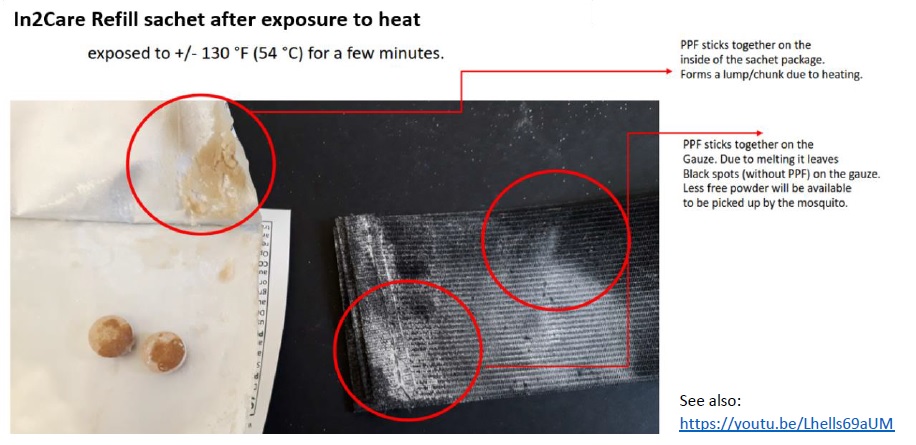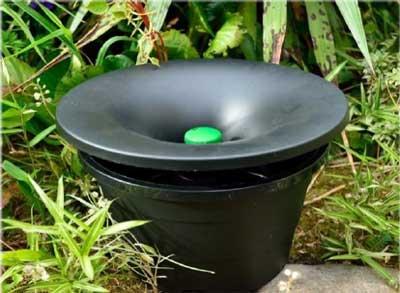
Read on for In2Care application tips.
Shake Refill sachets well before use
In2Care sachets come with .5 gram of active ingredient, an electrostatically charged gauze, and 2 yeast tablets (the latter as an initial attractant). Although the active ingredient powder is attracted to the charged gauze, shaking prior to opening the sachet helps to spread the powder on all pieces of the gauze, which will give optimal results. A well-shaken refill will result in a gauze fully covered with white powder.
See video: https://youtu.be/Lhells69aUM
Note that some parts may be whiter than others – that is no problem. If there are large black spots, put the gauze back in the sachet and shake vigorously again.
Handle and place the In2Care Station properly
- Avoid sunlight. In2Care Stations should not be placed in an area that gets any sun during the day. This is especially true in mid-summer where temperatures are higher. Heat from direct sun exposure will not only reduce the attractiveness of the station to the mosquito, it may also negatively affect the active ingredients. We recommend checking each Station location at different timepoints during the day.
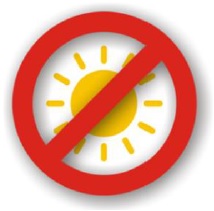
- Make sure the Stations are spaced out per label/manual requirements but also try to put one or two as close to a human activity/leisure area as feasible. For the mosquito to thrive, they need water, a quiet place to develop, and a readily available blood meal (humans). We recommend placing relatively more Stations in areas where mosquito breeding is observed orcan be expected.

- A typical yard of 8000 to 9000 ft² will take 2-3 Stations. However, if the yard is larger or if there is an over-abundance of foliage in the customer’s yard and/or surrounding properties, more Stations may be needed for optimal results. In2Care Stations can be used from as few as 10 to as high as 15 Stations per acre (as many as 1 Station per every approximately 2900 ft² square feet of non-structural land). If this cannot be done for any reason, it will be important that a concurrent spray/misting program be implemented.
- The gauze needs to remain dry for the powders to work best. When handling and setting the In2Care Station it is important to remember to have the water-filled bucket in place in the desired location first, then gently place the floater with the attached sachet on the clean water. The floater component of the Station is made to float at a specific level in the water with the weight of the dry gauze. Dropping the floater into the water or ‘sloshing’ the water after the floater is placed in the Station may cause the gauze to get wet, which may in turn may cause a wicking effect on the gauze that will reduce the active area of the gauze. When Stations need to be relocated, first take out the floater and put this back in only after the bucket is in place again.
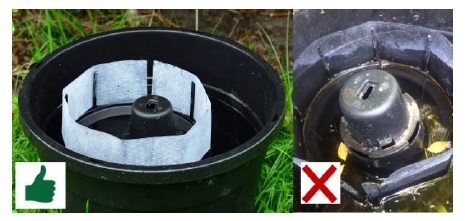
- It is also important when first extracting the gauze from the package for replacement or initial Station application that it shows evidence of free dust. A viable gauze should drop a small
amount of dust when removed from the package. If not, check with gloves to see if there is free dust on the gauze. This will assure the very important In2Care dissemination mode will happen. If there is no sign of free dust, then it is likely the sachet is exposed to too high temperatures (See the section ‘Keep refill sachets cool’) and will need to be replaced.
- Direct spray from sprinklers should be avoided. Vertical rainfall or water from sprinklers will not affect Station performance in fact will help keep the water lever up. However, setting too close to sprinklers (horizontal sprays that get under the lid) will wash the active ingredients off the gauze. It will also make the floater heavy and tend to partially sink it.
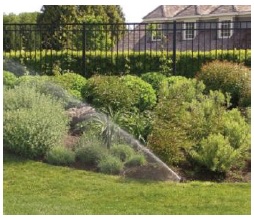
- As per the label, replace the water in the Station when it’s time to replace the In2Care gauze. Aedes mosquitos like fairly clean water so saving some or all of the old water really does not enhance its effectiveness. The 2 yeast tablets as well as the proven design of the Station will be more than enough to attract gravid females. By disposing of the old water, it will also eliminate other contaminants such as grass, leaves, etc. that could possibly clog the overflow holes should a very heavy rain occur.
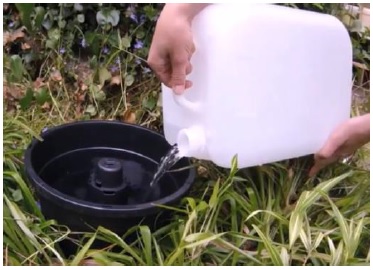
Managing customers’ expectations
- The Station especially targets Aedes and Culex Mosquitoes. The Station will not control Floodwater mosquitoes (Aedes vexans and salt marsh mosquitoes) and midges. In these cases, additional chemical application may be necessary for optimal control
- It will take 2-3 weeks to see an effect of the Station. The actives inside the In2Care Station need time to spread into the environment and will mainly impact the next generation of mosquitoes by reducing their breeding success. Therefore, you may decide to start with an initial misting barrier treatment (for instance with Demand, Tempo Ultra or any residual insecticide) to knock down the population of adult mosquitoes.
- Note that a Mosquito ‘bloom’ after heavy rains can still occur. Aedes mosquitos can lay many eggs around a yard that can remain dormant for many months while waiting for water. Once the rains come, you can get a blooming effect in that many of the dormant eggs will hatch and lead to biting adults. In2Care Stations can control this population increase, however because of its delayed effect, it may take a couple of weeks to again reduce the population. A one-time chemical application may be needed as well as some customer education of the process.
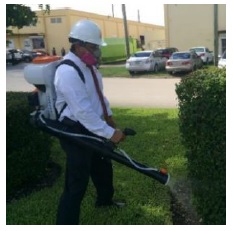
Keep Refill sachets cool
For optimal Refill sachet handling it is important that the In2Care sachets be kept at a moderate to cool temperature. When refills are exposed to too much heat (>110° F) the powders will melt and form “caked powder” plaquettes, which greatly reduces the effective pick up and transfer by the mosquito and thus seriously limiting In2Care Station efficacy. See below photo an example of a refill exposed to too high temperatures. This refill should not be used in the Station – a new refill needs to be used in this case.
- When storing the sachets in the office, it is advisable to use a refrigerator to maximize the life span of the fungus and to avoid caking of pyriproxyfen when it is really hot. However, it can also be stored in an air-conditioned office (preferably at < 80°F) for several months with no decrease in efficacy.
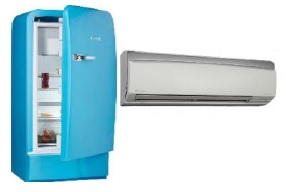
- For field storage - when traveling to job sites with In2Care
Stations, it is critical the sachets be kept out of the sunlight AND be stored in an insulated container especially when in the hot cab of the service vehicle. Not doing so may significantly reduce effectiveness. In2Care suggests an Igloo® type container with an ice pack or cooling block. Refills should not be left in the car without a cooler box and should not be transported on clipboards where they will be exposed to the sun.

For information about the In2Care Mosquito Station, please see this factsheet.
